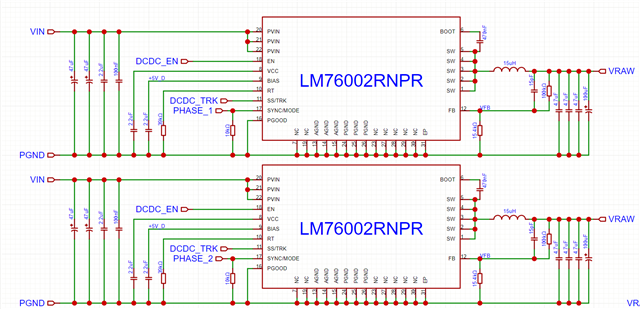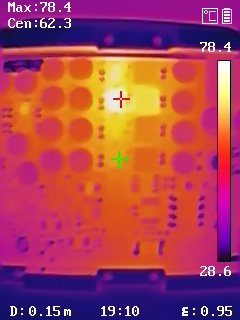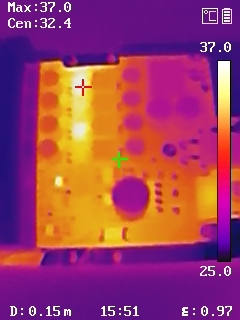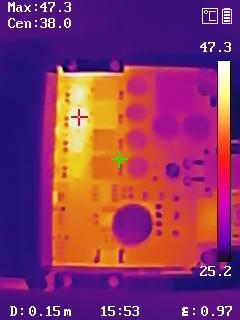Other Parts Discussed in Thread: TPS54360B, TPS54260
I'm building a 4-phase interleaved Buck converter with LM76002. The MCU provides interleaved clocks for LM76002s. The main purpose is to get extremely low ripple voltage.
In my test board, I've noticed that there seems to be some problem on current sharing.

There's four chips in total, which only two of them are shown in the picture.
Vin = 20V, fsw = 1MHz, Vout = 7.6V, Iout = 2A. FB pins of the four chips are tied together.

I found one of the four chips obviously hotter that others. The inductors show the same thing better. I tested the waveforms at SW node of each LM76002. The duty cycle of the hotter chip is slightly higher. The hotter chip of different boards are not the same position. I think it's mainly because the internal reference voltage has difference.


(These two pictures were take not long after start up, so the temperatures are lower than that of above one.)
I tried to apply about 0.9V on the SS/TRK pin, and it seems better. At least the four inductors shows similar temperature. The first picture shows similar inductor temperature, which has 0.9V on SS/TRK. The second picture shows one hotter chip and one hotter inductor, has 1.25V on SS/TRK.
My question is that can I use it like this in long term operations? Current sharing is a big issue for me because I'd like to use it with heavier load, maybe up to 8A. (I've designed heat sink and it's not installed at present.)
And another small question. Will it damage the LM76002 when BIAS is 5 Volts but PVIN is 0 Volts for long time? Or will current flow reversely from BIAS to PVIN?
I'm using other step down converters for circuits like MCU, ADC and DAC, so there's easily accessible 5V for external BIAS. And there's a relay in PVIN as circuit breaker providing additional protections. I'd like to avoid protection designs causing new damage.

